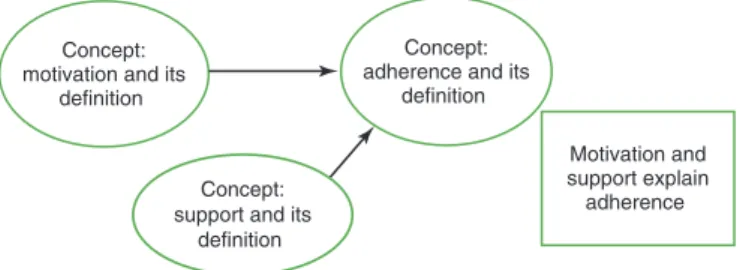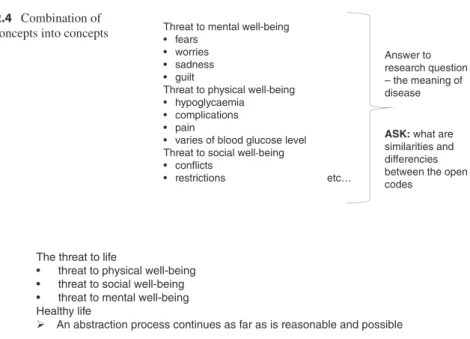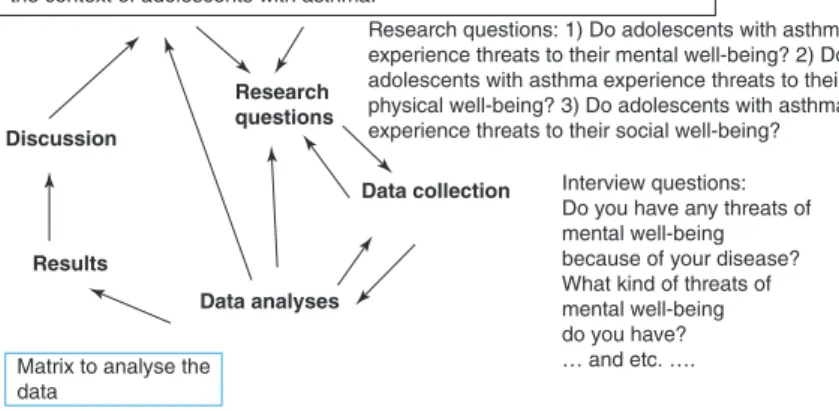Helvi Kyngäs, RN, PhD is a professor of nursing at the Nursing and Health Management Research Unit of the University of Oulu, Finland. Kristina Mikkonen, RN, PhD is a researcher and educator at the Nursing and Health Management Research Unit at the University of Oulu, Finland.
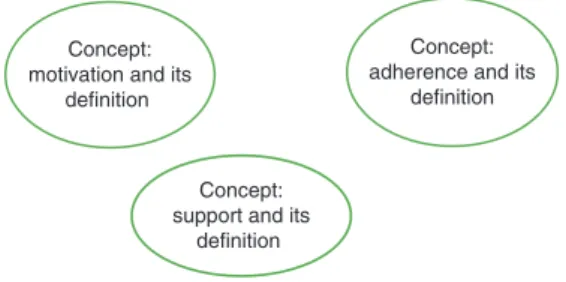
Comparison Between Quantitative and Qualitative Research
Quantitative and Qualitative Research Processes
In quantitative research (Fig. 1.4), the research questions and hypotheses are based on a theoretical framework, while objective measures are based on prior knowledge. They might reply "it's nice, but my husband is seriously ill and I don't know if he will survive." The researcher realized that the participants could not focus on the environment around them because they were more.
Special Characteristics of Qualitative Research
Studies that require research permission from a certain institute will break qualitative research principles, as they will need to provide a sample size so that the board (or person) responsible for providing research permission can know how many people will participate in the study. For example, if a researcher first obtained consent to interview 20 people but did not reach data saturation, then they will need to think about how many more people they will include in the next research consent form.
Qualitative Research and Content Analysis
Problems with the definition of the research approach begin to appear when the starting point approaches the point “X” on the line (Figure 1.6). Although this is an open-ended premise (inductive research), the research question demonstrates that the researcher already knows that certain factors will support adherence to health regimens based on previous literature.
Conclusion
This can be examined through an example research question: what factors support good adherence to health regimens. The researcher can then collect data by asking participants about factors that support good adherence to health regimens.
Inductive Content Analysis
- Background of Content Analysis
- Inductive Content Analysis
- An Example of Inductive Content Analysis
- Frequently Asked Questions
- Reporting Results
- Trustworthiness of Inductive Content Analysis
- Conclusion
The researcher must be familiar with the collected data when starting the process of inductive content analysis. In the presented example, the two main categories identified through inductive content analysis are responses.
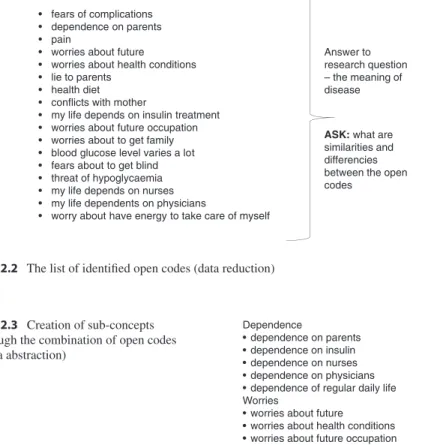
Deductive Content Analysis
- Deductive Content Analysis
- Research Process of Deductive Content Analysis
- Examples of How Deductive Content Analysis Has Been Applied in Nursing Research
- Example of Structured Deductive Content Analysis
- Reporting of Results
- Trustworthiness of Deductive Content Analysis
- Conclusion
The research process underlying deductive content analysis is very similar to that of inductive content analysis. Moreover, the process of deductive content analysis promotes returning to the research questions after data collection and analysis (Fig. 3.1).
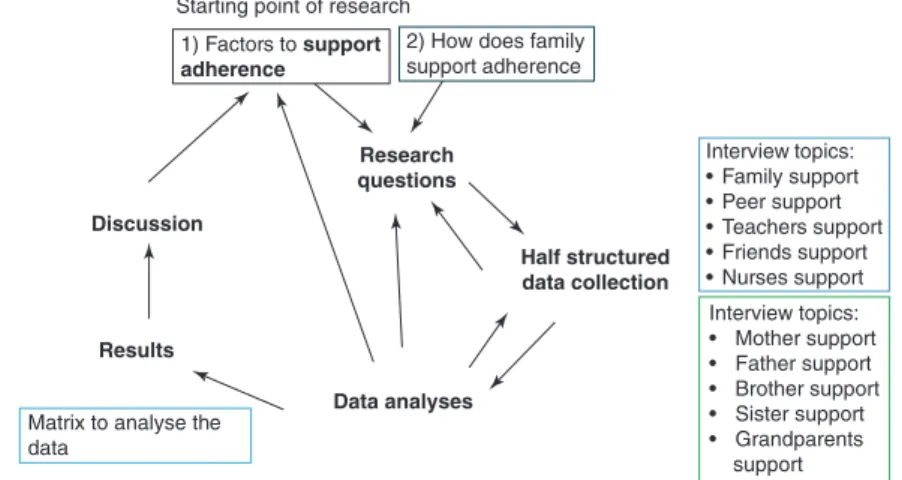
Content Analysis in Mixed Methods Research
Philosophical Background of Mixed Methods in Nursing Science
Content analysis can be incorporated into mixed methods approaches in at least three different ways. The following section provides some examples of the use of content analysis in mixed methods research.
Examples of How Mixed Methods Are Used in Nursing Science
As in the previous sentence, the results of quantification can be given in numerical form. In the study presented in this section, six of the 10 categories showed sufficient Cohen's kappa values. The results of the qualitative analysis were reported as the frequencies at which the most frequent open codes appeared in the collected data.

Conclusion
The results section also included descriptions of each category identified, the frequency with which open codes appeared in each of the 10 categories, and direct quotes from participants [18]. The quotes were presented to support the researchers' interpretations of the results and provide further confirmation of the credibility of the research. Research Unit for Nursing Science and Health Management, University of Oulu, Oulu, Finland e-mail: [email protected]; [email protected]; [email protected].
The Trustworthiness of Content Analysis
- Trustworthiness in the Context of Qualitative Research The terms reliability and validity were earlier used in both qualitative and quantita-
- Trustworthiness: Credibility
- Trustworthiness: Dependability
- Trustworthiness: Confirmability
- Trustworthiness: Authenticity
- Trustworthiness: Transferability
- Conclusion
First, it may be beneficial for the researcher to spend time with the study participants before the data collection phase begins. As a result, the researcher will become familiar with the participants and have a better understanding of which questions will elicit responses relevant to the research objective. As discussed earlier, the researcher must describe their research in a transparent manner so that the reader can make an informed decision about the credibility of the research.
Qualitative Research: Ethical Considerations
Introduction
Nursing and Health Management Research Unit, University of Oulu, Oulu, Finland e-mail: [email protected]. For example, the Declaration of Helsinki is a statement of ethical principles originally intended for medical research, but currently also guides nursing research involving humans [ 5 ]. Research ethics is a general term that encompasses all ethical attitudes and assessments related to science and research.
The Role and Importance of Ethical Principles in Subject Protection
Disclosure is vital to the informed consent process because study subjects who have not received complete study information have an insufficient basis for autonomous decision-making [6]. Previous literature shows that potential study participants often have limited understanding of the information they are given. Previous research has shown that face-to-face interaction between researcher and subject during the informed consent process can optimize study subjects' understanding of relevant parts of the study.
Principles for the Responsible Conduct of Research
Fair credit • Researchers must ensure fair distribution of research credit, for example, authorship credit in publications, patents, and other materials. Researchers should be encouraged to review and critique each other's work Confidentiality • Researchers should protect parts of the research project as appropriate. Compliance with the law • Researchers must conduct research according to relevant law and institutional policies.
![Table 6.1 The principles for responsible conduct of research presented by Shamoon and Resnik [1]](https://thumb-ap.123doks.com/thumbv2/123dok/10247534.0/59.659.77.580.104.874/table-principles-responsible-conduct-research-presented-shamoon-resnik.webp)
Realisation of Ethical Principles in Content Analysis
In addition, this study increases the transparency of the clinical research process in university hospitals. However, it is possible that some participants were concerned that their employers would know they were taking part in this study or would express their opinion based on the study results. Representatives of the organizations were informed about the research and recruitment before the start of the recruitment process.
![Table 6.2 The ethical framework presented by Emanuel et al. [41, 42], as well as examples of how it can be applied to a qualitative study](https://thumb-ap.123doks.com/thumbv2/123dok/10247534.0/63.659.78.584.117.923/table-ethical-framework-presented-emanuel-examples-applied-qualitative.webp)
Future Challenges for Content Analysis
Recent research has identified six issues that will challenge research ethics in the coming years, namely, the evolving nature of health data in clinical research, health data sharing, data anonymization, collaboration between stakeholders, regulation complex and related to ethics. tensions between social benefits and privacy [27]. For example, researchers are typically challenged to convey detailed and accurate descriptions of the social world while simultaneously protecting the identities of their study subjects [51]. Comparing knowledge, attitudes, and beliefs about using personal health information in clinical research.
Integrating Content Analysis into Theory Development
Theory Development from the Results of Content Analysis
Theory Development in Nursing Science
- The Definition of Theory
- Levels of Theory
- Theory Development Strategies
- The Structure of Theory
A theory can be classified by scope, which refers to complexity and degree of abstraction. This means that inductive strategy can be used to develop a hypothetical model rather than a theory. The concepts can be abstract (social support, personality) or concrete (e.g. chair, red color), depending on the level of theory.
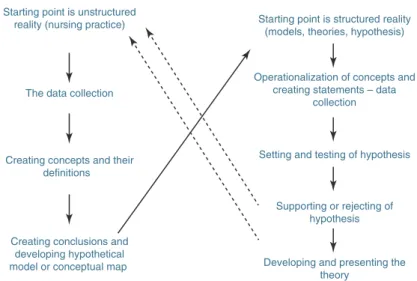
The Creation of Concepts Through Content Analysis
- The Theory Development Process: From Inductive to Deductive
- Phase 1: Inductive Development of a Hypothetical Model
- Phase 2: Development of an Instrument to Test the Hypothetical Model
- Phase 3: Testing the Hypothetical Model
- Phases 4: Expansion of the Model
- Phase 5: Construction of a Theoretical Model of Adherence In the next step of the theoretical model development process, the MIMIC model
- Phase 6: Development of an Instrument that Can Be Used to Test the Theoretical Model and Build Theory
- Phase 7: Testing the Theoretical Model to Create Theory
- Reporting a Theory
The results were used to create a hypothetical model of adherence among adolescents with type 1 diabetes. This resulted in an instrument that can be used to test a theoretical model of adherence among adolescents with type 1 diabetes, asthma, epilepsy and arthritis. The theoretical model was tested with the aim of creating theory about adherence among adolescents with chronic illness.
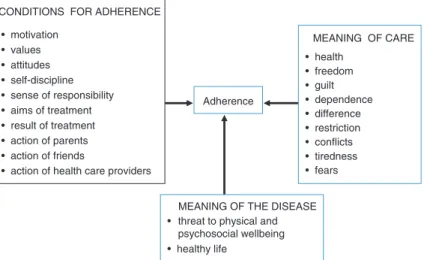
Evaluation of Theory
For example, the value of the -2 log probability was 433.764, the goodness of fit index was 1430.615, Nagelkerke's R2 was 0.829, indicating that the logistic regression model explains 82% of the variance, and the model correctly predicted 94% of the adolescents with good adherence. The Cronbach's alpha values for different patient groups were: 0.92 for adolescents with asthma; 0.94 for adolescents with epilepsy; 0.93 for adolescents with type 1 diabetes; and 0.94 for adolescents with arthritis. Acceptance refers to how useful the theory is in practice, research, teaching, or administration, while socio-cultural utility describes how applicable the content of the theory is to the beliefs, values, and expectations of different cultures.
Instrument Development Based on Content Analysis
Measurement in Nursing Science
- The Instrument Development Process
- Phase I: Conceptual Framework Development and Item Generation
- Phase II: Judgement Quantification
- Phase III: Psychometric Testing of the Instrument
Content validity means that the instrument provides an adequate representation of the construct it was created to measure [8, 12]. The CVI is formed from the evaluation of each item of the instrument by each expert panel member. The S-CVI is calculated by averaging the I-CVI values for all the items included in the instrument.

Discussion
- Validity of the Instrument
The internal consistency of an instrument can be tested by calculating Cronbach's alpha coefficient, which is an indication of how well the items fit together conceptually. When an instrument is designed for clinical applications, some authors have suggested that Cronbach's alpha values should ideally be at least 0.90 or. In some cases, researchers may think that Cronbach's alpha coefficient is artificially inflated by adding a large number of similar items to an instrument [21].
Limitations
Cronbach's alpha values for both sets of empirical data exceed, although there is disagreement about the ideal values of these coefficients. However, DeVellis [21] suggests that Cronbach's alpha coefficient values greater than 0.90 are indicative of redundancies and suggest that the instrument should be shortened. Nursing Science and Health Management Research Unit, Oulu University, Oulu, Finland e-mail: [email protected]; [email protected].
Statistical Testing of a Theory
- Theories of Nursing Science
- Definition of Theory Testing
- The Process of Theory Testing .1 Aim
- Study Design
- Data Collection
- Data Analysis
- Reporting Results
- Generalisability and Usability of Results
- Limitations of Theory Testing
- Conclusion
The research report contains an analysis of the empirical results with regard to the tested theory. The target group should be representative of the group or context to which the theory applies. However, researchers should not expect that testing a theory will lead to practical implications, since the main value of theory testing is in identifying parts of the theory that need further development.
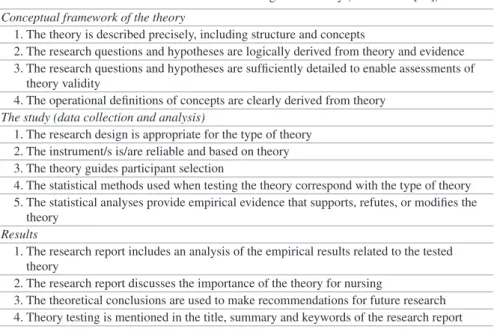
Content Analysis in Systematic Reviews
Systematic Reviews in Nursing Science
Criteria are important for qualitative and quantitative research and should be mentioned in the systematic review protocol. Studies to be included in a systematic review must undergo a quality assessment prior to synthesis of results. Essentially, the appraisal process helps researchers decide whether a particular study should be included in a systematic review or not.
Using Content Analysis in the Data Synthesis Phase of a Systematic Review
- An Example of a Systematic Review of Qualitative Studies That Employed Content Analysis During the Data
Content analysis – if used in a systematic review – will follow the steps described in Chap. Reporting the results of content analysis differs slightly when this method is used for original research and when it is used in a systematic review. The research question of the systematic review (Which competency areas do health science teachers consider important to their role as a teacher?) was used to guide the content analysis.
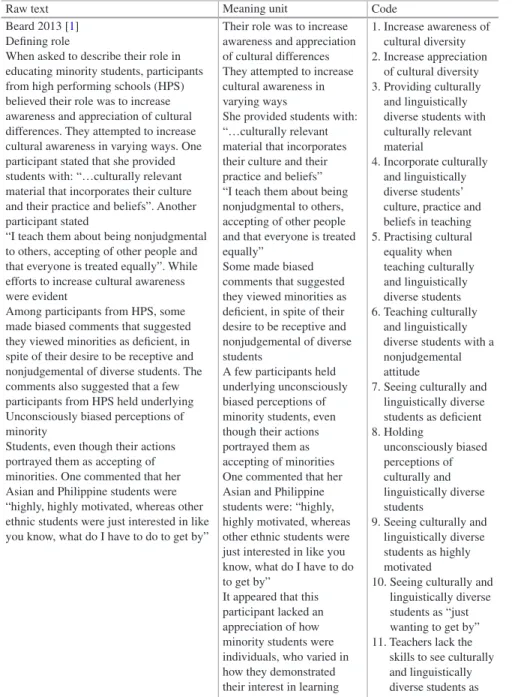
Conclusion
The original qualitative data cannot be obtained when conducting a systematic review; thus, a researcher must rely on their interpretation of preliminary reports. In terms of benefits, researchers usually apply content analysis to a systematic review because evidence received from multiple sources can provide a broader picture of a certain phenomenon. Filling the gaps: identifying nursing research priorities through the analysis of completed systematic reviews.
